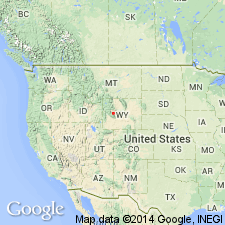
- Usage in publication:
-
- Porcupine Ranch soil*
- Modifications:
-
- Named
- Dominant lithology:
-
- Soil
- AAPG geologic province:
-
- Paradox basin
Summary:
Name applied to a relatively weakly developed zonal soil developed on lower member of Placer Creek formation (new). Is recognizable only where it is overlain by the upper member of Placer Creek. Where not buried by the upper member, it was covered by the more strongly developed Lackey Creek soil (new). Is nowhere recognized on bedrock. Type locality is on north bank of Placer Creek, 100 yds upstream from Porcupine Ranch in SW1/4 SW1/4 sec 36, T25S, R23E, Grand Co, UT in the Paradox basin. Marks an interval of nondeposition and slope stability following deposition of lower member of Placer Creek. Has a: 1) Brown soil facies 5,800-6,800 ft elev. in Castle Valley and 5,400-5,800 ft elev. in Fisher Valley, has a B horizon (A horizon stripped before burial) 6 to 24 in thick, red-brown to brown, weak, medium to fine, angular to subangular blocky, and a Cca horizon about 12 in thick, pink to brown with carbonate as lenses and streaks, very friable and nonplastic matrix; and a 2) Sierozem facies. The Porcupine Ranch is not widely enough exposed to show its character. Soil profiles, correlation charts. Of early Wisconsin age.
Source: GNU records (USGS DDS-6; Denver GNULEX).
For more information, please contact Nancy Stamm, Geologic Names Committee Secretary.
Asterisk (*) indicates published by U.S. Geological Survey authors.
"No current usage" (†) implies that a name has been abandoned or has fallen into disuse. Former usage and, if known, replacement name given in parentheses ( ).
Slash (/) indicates name conflicts with nomenclatural guidelines (CSN, 1933; ACSN, 1961, 1970; NACSN, 1983, 2005, 2021). May be explained within brackets ([ ]).

